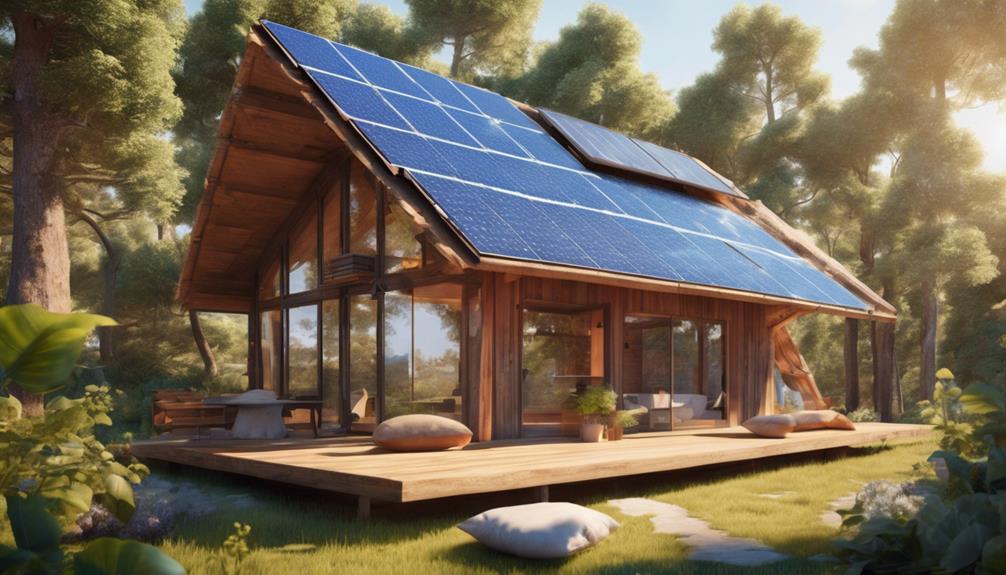
Understanding Monocrystalline Solar Panels
Monocrystalline solar panels are a popular choice for harnessing solar energy, known for their high efficiency and sleek appearance. These panels are made from a single crystal structure, typically silicon, which allows for greater electron mobility and, consequently, increased power output. When compared to other types of solar panels, such as polycrystalline and thin-film, monocrystalline panels excel in performance and space efficiency. This makes them particularly appealing for homeowners and businesses looking to maximize their solar energy production.
The Advantages of Choosing Monocrystalline Solar Panels
One of the most significant advantages of monocrystalline solar panels is their efficiency. They typically have an efficiency rating between 15% and 22%, meaning they convert a higher percentage of sunlight into usable electricity. This efficiency translates into higher energy output, especially in limited space areas. Additionally, monocrystalline panels perform better in low-light conditions, making them suitable for various climates. Their long lifespan, often exceeding 25 years, coupled with a solid warranty, makes them a wise investment for solar energy systems.
How Monocrystalline Solar Panels Are Made
The manufacturing process of monocrystalline solar panels is crucial to their performance. It begins with the creation of silicon ingots, which are formed by cooling molten silicon into a single crystal structure. This is achieved through the Czochralski process, where a seed crystal is dipped into the molten silicon and slowly pulled out, forming a cylindrical ingot. Once the ingots are created, they are sliced into thin wafers, typically around 180-200 micrometers thick. These wafers are then treated and coated to enhance their efficiency, resulting in the high-performance monocrystalline solar panels used today.
Installation Process of Monocrystalline Solar Panels
Installing monocrystalline solar panels involves several steps, starting with a site assessment to determine the best positioning for optimal sunlight exposure. After planning the layout, the installation team will mount the panels on a roof or ground system, ensuring they are securely fixed and angled correctly. The next step involves connecting the panels to an inverter, which converts the generated direct current (DC) into alternating current (AC) for use in homes. Finally, the system is connected to the electrical grid, allowing excess energy to be fed back into the grid or used in the home, maximizing efficiency and energy savings.
Comparing Monocrystalline and Polycrystalline Solar Panels
When considering solar panel options, many potential buyers often compare monocrystalline and polycrystalline panels. While both types utilize silicon, the key difference lies in their structure. Polycrystalline panels are made from multiple silicon crystals, resulting in a less efficient energy conversion rate, typically between 13% and 17%. While polycrystalline panels are generally less expensive than their monocrystalline counterparts, the latter offers superior efficiency and performance, particularly in space-constrained environments. For homeowners looking for the best return on investment and energy output, monocrystalline solar panels are often the recommended choice.
Cost Considerations for Monocrystalline Solar Panels
While monocrystalline solar panels tend to be more expensive upfront than other types, their long-term savings and efficiency can make them a worthwhile investment. The cost of installation varies based on factors such as location, installation complexity, and available incentives or rebates. It’s essential to factor in potential savings on electricity bills, as well as any government incentives for solar energy adoption. Over time, the increased energy output and durability of monocrystalline panels can lead to significant cost savings, making them an economically sound choice for many homeowners.
Maintenance and Longevity of Monocrystalline Solar Panels
One of the appealing aspects of monocrystalline solar panels is their low maintenance requirements. Generally, they require minimal upkeep, primarily periodic cleaning to remove dust, debris, and snow. Regular inspections can ensure that the system is functioning optimally and that any potential issues are addressed promptly. With a lifespan often exceeding 25 years, monocrystalline solar panels are designed to withstand harsh weather conditions, making them a durable and reliable option for long-term energy generation.
The Future of Monocrystalline Solar Technology
As technology advances, the future of monocrystalline solar panels looks promising. Ongoing research and development aim to enhance their efficiency further, reduce manufacturing costs, and improve their environmental impact. Innovations such as bifacial solar panels, which can capture sunlight on both sides, and advances in materials science are paving the way for even greater performance. As more homeowners and businesses embrace renewable energy, the demand for high-quality solar solutions like monocrystalline panels is expected to grow, contributing to a more sustainable future.
In summary, monocrystalline solar panels offer a range of benefits, from high efficiency and durability to low maintenance requirements. While they may come with a higher initial cost, the long-term savings and energy output make them an attractive option for solar energy investment. Whether you’re considering solar energy for your home or business, understanding the advantages of monocrystalline solar panels can help you make an informed decision that aligns with your energy goals.





